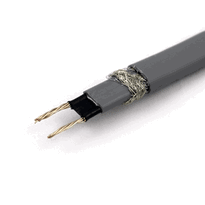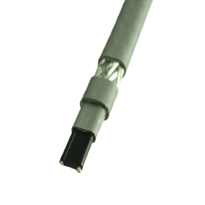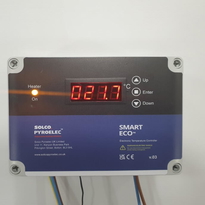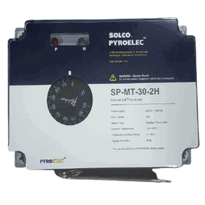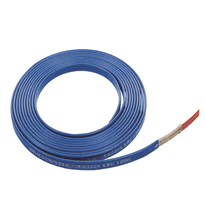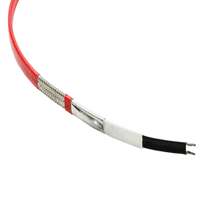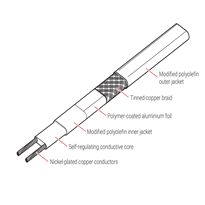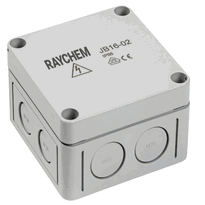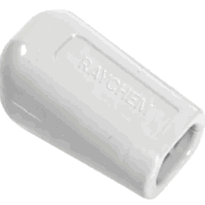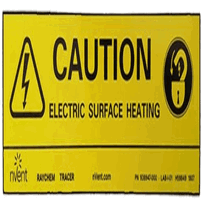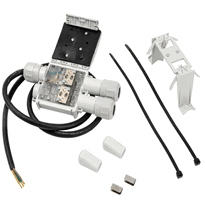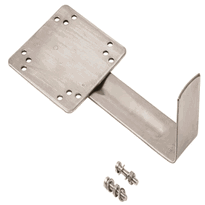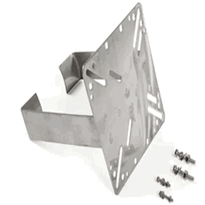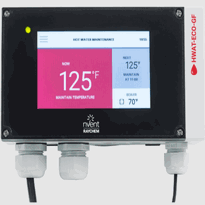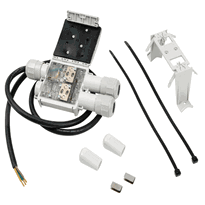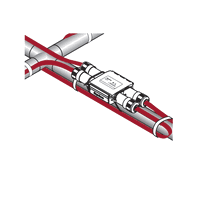Outdoor Heat Tape for Pipes
Outdoor heat tapes for pipes are designed to prevent freezing and bursting by providing controlled heat along vulnerable plumbing, especially during cold weather. Available in various types such as silicone rubber, fiberglass-insulated, and high-temperature woven fabrics, they support different temperature ranges and environmental resistances.
Proper installation involves cleaning pipes thoroughly, securing cables evenly along the length, avoiding air gaps, and following the manufacturer's instructions carefully. Ensuring the correct placement of the temperature sensor and implementing safety measures like circuit protection are essential for maintaining reliability and safety.
Understanding these details will better prepare users to carry out effective and long-lasting pipe protection in outdoor environments.
Understanding Different Types of Outdoor Heat Tape for Pipes
There are several types of outdoor heat tape designed to prevent pipes from freezing, each with distinct features, material compositions, and operational capabilities. Silicone rubber heat tape offers high wattage options, adjustable thermostats, and grounding, with resistance to chemicals and moisture, making it suitable for temperatures up to 230°C. Fiberglass-insulated tape provides higher temperature tolerances, supporting up to 250°C in grounded versions and even up to 482°C for specialised applications. It has the advantage of durability and suitability for electrically conductive surfaces. The Samox high-temperature heat tape, constructed from woven fabric, excels at extreme temperatures—up to 760°C—and is designed for demanding industrial environments requiring precise, high-heat containment. Heat tape's ability to operate safely at high temperatures depends on the type and construction, ensuring it meets specific industrial or residential needs. Proper insulation and thermal management are essential to maximize heat tape effectiveness and prevent damage or hazards in extreme conditions. Understanding these options helps ensure the selection of appropriate heat tape based on specific pipe heating needs and environmental conditions.
Preparing Your Pipes for Heat Tape Installation
Preparing Pipes for Heat Tape Installation
Before installing heat tape, it's essential to prepare the pipes thoroughly. Begin by inspecting the surface to ensure it's clean, dry, and free from moisture, dirt, grease, or any foreign materials that could hinder heat transfer or present electrical hazards. Cleaning the surface thoroughly helps ensure optimal heat transfer and adherence. Wipe down the pipes to remove dust, grease, and moisture, creating a smooth surface for optimal adhesion. Any damage, such as cracks or leaks, should be repaired prior to installation to ensure the system functions effectively and safely. Remove old insulation or tape residues carefully, as these can interfere with the heat tape’s adherence and performance. It is also crucial to confirm that the pipe material is compatible with the selected heat tape, particularly when working with plastic pipes. Choosing the correct type of heat tape will prevent melting and damage, ensuring long-lasting performance. Proper preparation not only guarantees a safe and effective installation but also helps maintain the long-term reliability of the heat tape system. Additionally, considering the insulation materials surrounding the pipes, such as those from Celotex Insulation, can improve overall energy efficiency and system performance.
Proper Techniques and Safety Tips for Installing Heat Tape
Implementing proper techniques and adhering to safety tips during heat tape installation are essential to ensure both the system's effectiveness and user safety.
Begin by positioning the heating cables appropriately according to pipe size. For pipes less than 75 millimeters in diameter, lay the cable in a straight line along the pipe's length. For larger pipes, spiral wrapping is recommended to promote even heat distribution.
Secure the heat tape at one-meter intervals using suitable materials such as fiberglass or aluminium tape or plastic ties. Avoid using materials like duct tape or vinyl tape, as they may not withstand the required conditions. Make sure the cable maintains direct contact with the pipe surface, minimizing any air gaps to optimize thermal transfer.
When wrapping the pipe, maintain consistent spacing between coils to prevent the formation of hot spots. If overlaps are necessary, keep them to a minimum to prevent overheating issues. Always follow the manufacturer's instructions meticulously during installation.
Before switching on the system, inspect the cable thoroughly for any signs of damage, such as cuts or abrasions. Freezing water expands, which can cause pipes to burst if not properly protected, making careful installation critical. Using insulation materials around the pipe can further prevent heat loss and protect the system from environmental damage.
It's also prudent to install a Residual Current Device (RCD) or a Ground Fault Circuit Interrupter (GFCI) for electrical safety, especially in potentially damp environments.
Proper site preparation, including clear access and environmental protection, along with safeguarding wiring connections, will contribute greatly to the reliable operation of the heat tape system.
Benefits and Practical Applications in Cold Weather Conditions
In cold weather conditions, heat tape provides important advantages by offering a dependable solution to prevent pipes from freezing. Freezing pipes can lead to costly and disruptive damage, so applying heat tape helps safeguard property and infrastructure. It transmits direct heat to pipes, stopping ice formation and maintaining water flow. Self-regulating models adapt their heat output based on ambient temperatures, which helps optimize energy consumption and reduces operating costs.
When used alongside insulation, heat tape enhances overall effectiveness and further protects pipes from the harsh winter environment. This combination ensures a continuous water supply and minimizes the risk of pipe bursts. Its flexible design allows for application on various pipe materials and configurations, making it suitable for both outdoor and indoor settings.
The following table summarizes key practical considerations:
Benefit |
Practical Application |
| Prevents pipe freezing | Wraps around exposed or vulnerable pipes in outdoor or unheated spaces |
| Cost-effective operation | Use in conjunction with insulation to improve efficiency |
| Reduces damage risk | Combine with thermostats for automatic temperature regulation |
| Ensures continuous water supply | Install in residential buildings, commercial properties, and irrigation systems |
Maintenance and Troubleshooting for Long-Term Reliability
Maintaining the long-term reliability of outdoor heat tape requires systematic inspection and proactive management to identify and address potential issues before they lead to equipment failure or safety hazards. Regularly examine the heat tape for signs of wear, damage, or exposure, particularly prior to and during the colder months. Proper alignment and installation can minimize strain on the system. Inspect pipe joints carefully for leaks, as these can damage insulation and cause electrical shorts. Examine the insulation material for cracks or other damage, replacing it promptly to maintain efficiency and safety. Ensure electrical connections are secure and that cables are free from fraying or exposure to the elements. It is important to test the heat tape’s functionality regularly by verifying that it warms when powered on and maintains consistent operation throughout the winter period. Address any problems immediately: replace damaged cables, check and calibrate thermostats, and ensure sensors are correctly positioned to avoid false readings. Incorporating advanced manufacturing techniques in quality control processes can detect potential flaws early and improve overall system durability. Adopting a routine maintenance schedule will help prolong the lifespan of your outdoor heat tape and ensure it operates safely and efficiently throughout the colder seasons.
Conclusion
In summary, selecting the appropriate outdoor heat tape, preparing pipes correctly, and adhering to proper installation techniques are essential for ensuring reliable freeze protection. Regular maintenance and troubleshooting help sustain long-term functionality, minimizing potential failures. Professionals should follow safety guidelines to prevent electrical hazards during installation and operation. Implementing these best practices ensures effective temperature regulation, protects plumbing infrastructure throughout cold weather periods, and reduces the risk of costly water damage caused by pipes freezing and bursting.








